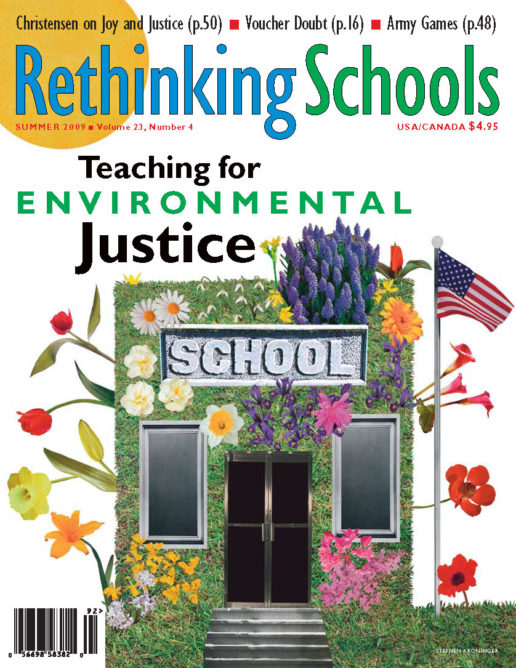Preview of Article:
Beat It! Defeat It! Racist Cookies
Promoting activism in teacher education
Illustrator: The Gothamist
Beat it! Defeat it! Racist cookies: We won’t eat it!” chanted 38 undergraduates from the New York University Childhood and Special Education Teacher Education Program as they stood in front of the Lafayette Bakery in Greenwich Village, holding signs and chanting as part of one of their classes. As their professor for the last two semesters, first for a multicultural curriculum design course and now in a course on integrated children’s literature, art, and technology, I knew that this group of preservice teachers had an awareness of social justice issues. They were excited about the idea of teaching from a social justice perspective, but had little firsthand experience taking social action themselves. In fact, only a handful of my majority white and middle-class students had ever participated in a public protest prior to this cold February evening. So how did we get to this moment where they passionately chanted, cheered, and talked to people passing by about “racist cookies”?
An email had circulated earlier that week through the NYU Department of Teaching and Learning about Lafayette Bakery. The owner was selling “Drunken Negro Head Cookies” in “honor” of President Obama. Yes: Drunken. Negro. Head. Cookies. (link to myfoxny.com story). When I received the email, I realized that the bakery was across the street from a field trip site that I had planned to take my students to the following week. As a teacher educator focused on social justice education, I began to wonder about how to take advantage of this teachable moment by incorporating this incident in my course. I sent the link to my students and asked them to bring one of our texts to class, The Kid’s Guide to Social Action, by Barbara Lewis.

